Melody Hsu
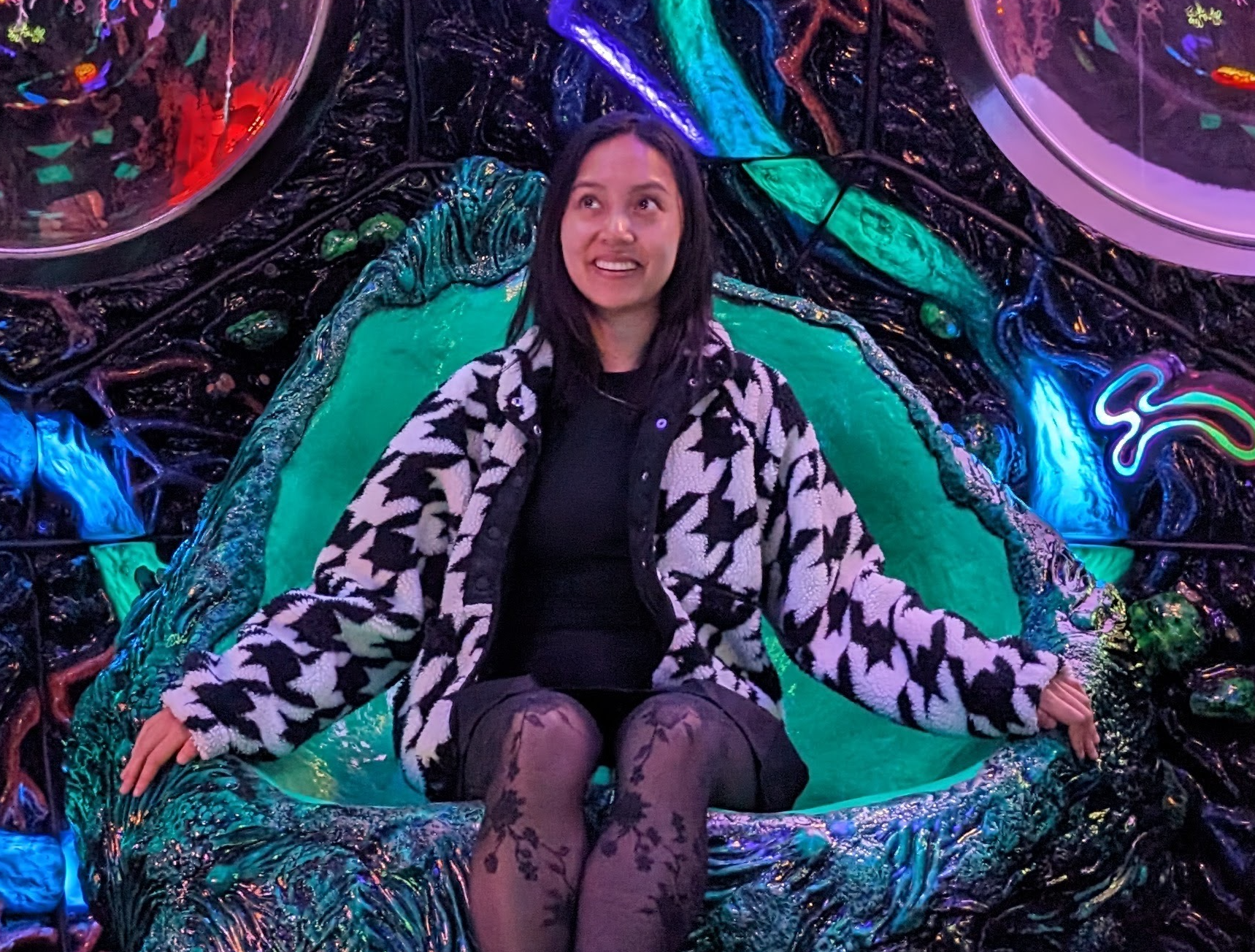
Last updated Sep 2025
Code
Find the Processing code for polar curves here, and for the Sierpinski carpet here. Find the code for a third design, which was based on the classic Windows “pipes screensaver,” here. (This design was not fabricated.)
Polar curves
The image for the polar curves is composed of two polar curves, one called “Splat” and one called “Flower.” The flower is generated by the equation \(r=\left(1.5+\cos\left(\frac{19\theta}{2}\right)^3\right)\cdot\rho\), and the splat is generated by the equation \(r=\left(2+\cos\left(\frac{19\theta}{2}\right)^2\right)\cdot\rho\), where $\rho$ is some scaling factor which determines the overall size of the curve. The design is comprised of three Splat curves with five Flower curves arranged equidistant from the center at the vertices of a regular pentagon.
This design was etched onto a circular piece of plywood of diameter 13cm.
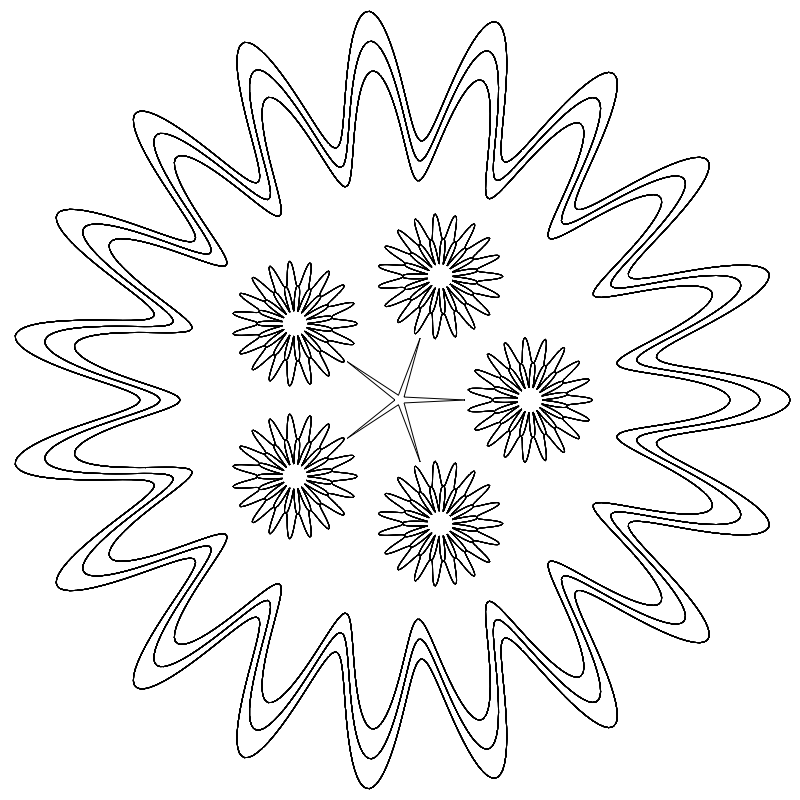
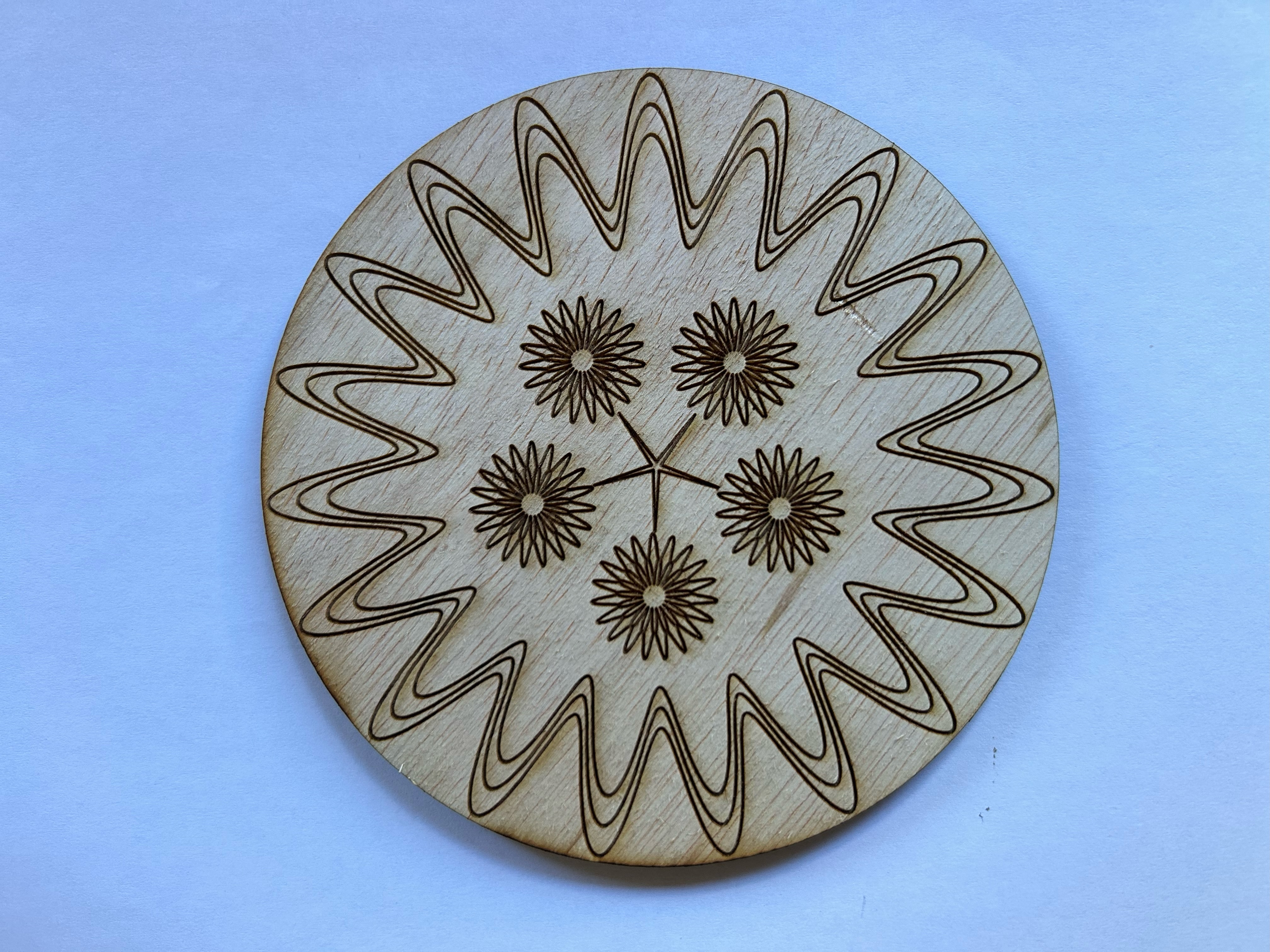
Sierpinski carpet
The Sierpinski carpet is a fractal that is formed by dividing a square into 9 equally sized sections, and “removing” the center one; this procedure is repeated for all 8 non-removed squares.
This design was cut onto a square piece of acrylic of side length 15cm.
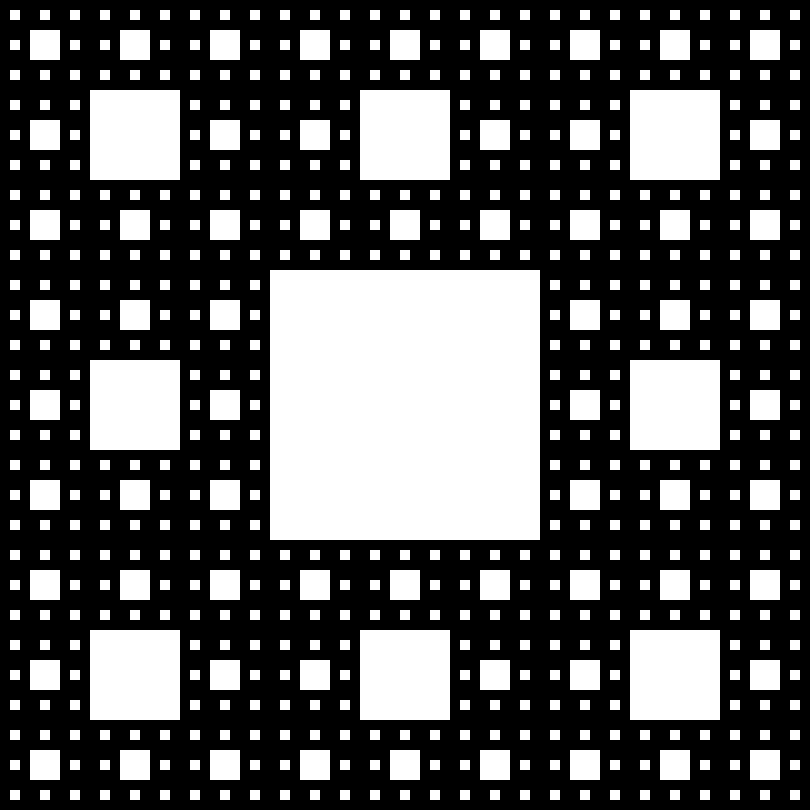
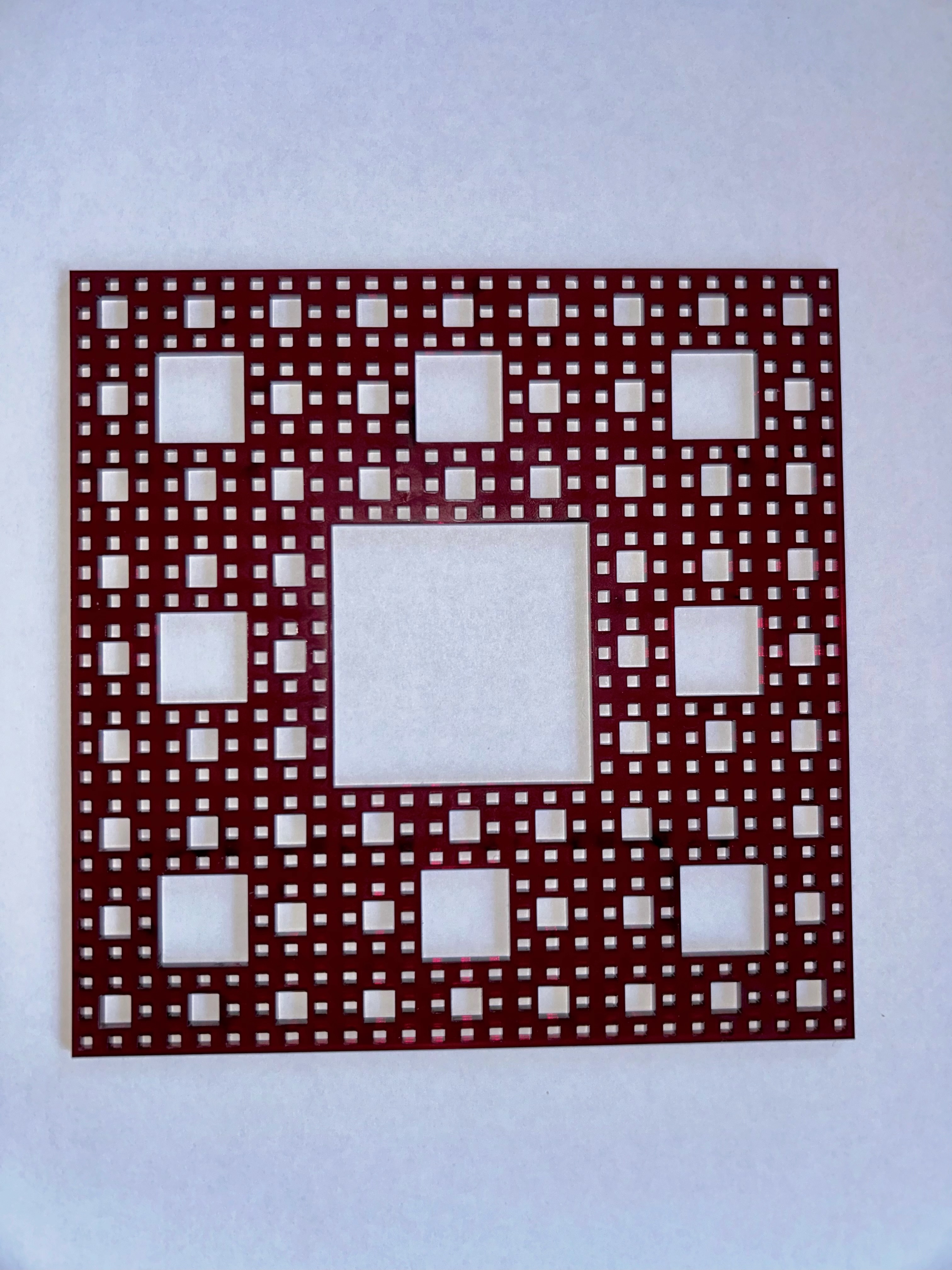
Pipe screensaver
The pipe screensaver was the most technically challenging to generate. To create this visual, it is necessary to use the 3D renderer. This design is also distinct from the previous two in that it is the only one to utilize randomness to generate both the lengths of the pipe segments and the directions in which they point. Because a random walk in three dimensions very quickly leaves the origin, the resulting network of pipes can vary greatly in aesthetic quality, with some runs generating a very unidirectional mass of pipes. Furthermore, the program would occasionally generate pipes that double back over themselves, resulting in very aesthetically displeasing configurations. To mitigate these two problems, the code prevents pipe segments from generating in either the same direction again (creating a very long pipe) or from generating in exactly the opposite direction (doubling back over itself), and is slightly more likely to generate pipes that retreat away from the camera perspective so as to remain in view.
This design is very dense and so was not fabricated.
Takeaways
Overall, both fabricated designs appear quite similar to the original rendered images. Most notably, in the Sierpinski carpet, the smallest square cutouts are larger than they should be relative to the non-cutout regions next to them (especially next to the cutouts from the previous iteration). This is likely due to precision issues with the laser cut width.
